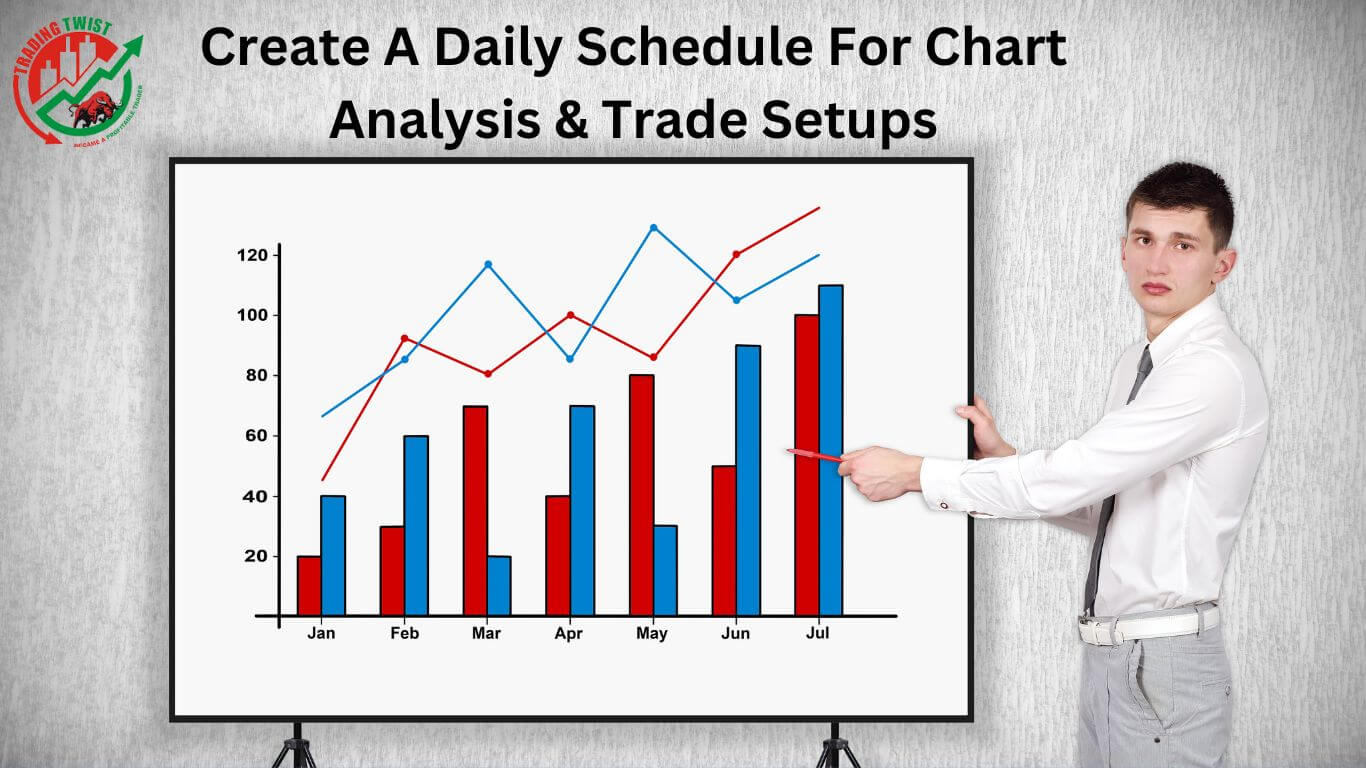
Chart analysis is a key component of trading, as it enables traders to analyze market data in a visual format. The primary objective of chart analysis is to identify trends and patterns in financial markets, which can then be used to inform trading decisions. Chart analysis is particularly important for technical traders, who use past market data to make predictions about future price movements.
In essence, chart analysis involves examining price charts, which provide a graphical representation of market data over a specific period of time. These charts typically show the price movements of a particular financial instrument, such as a stock, commodity, or currency pair, over time. Traders analyze these charts to identify key support and resistance levels, as well as trends and patterns that may indicate potential buying or selling opportunities.
What is a trade setup?
A trade setup is a combination of conditions that must be met before a trader enters a trade. These conditions typically include technical indicators, market trends, and other factors that traders use to determine the best time to enter or exit a trade. A trade setup may also include the use of stop loss and take profit orders to manage risk and maximize potential profits.
How to use charts to identify trade setups
To use charts to identify trade setups, traders must first select the appropriate chart type, such as candlestick or line charts. They then use technical analysis tools such as moving averages, trend lines, and support and resistance levels to identify potential trade setups. Traders can also use chart patterns, such as head and shoulders or double top/bottom patterns, to identify potential trading opportunities.
The benefits of chart analysis
Chart analysis provides traders with a range of benefits, including the ability to identify trends, patterns, and other market conditions that can inform trading decisions. This analysis also allows traders to evaluate potential risks and rewards associated with specific trades, helping them to make more informed decisions about when to enter or exit a trade.
The tools of chart analysis
There are several tools that traders can use to perform chart analysis, including technical indicators, trend lines, moving averages, and chart patterns. Each of these tools provides a unique perspective on market conditions and can be used in combination to help traders identify potential trading opportunities.
How to set up a charting program
Charting programs are essential tools for traders who want to analyze financial markets and make informed investment decisions. These programs allow traders to visualize market data in the form of charts and graphs, which can help them identify trends and patterns that may not be immediately visible from raw data.
To get started with a charting program, traders first need to select a charting platform that meets their needs. There are a variety of charting platforms available, each with its own features and capabilities. Some popular options include TradingView, MetaTrader, and think or swim.
How to use charting tools
Traders can use charting tools such as technical indicators, trend lines, and moving averages to identify potential trade setups. These tools provide insight into market conditions, allowing traders to make informed decisions about when to enter or exit a trade. Traders can also use chart patterns, such as head and shoulders or double top/bottom patterns, to identify potential trading opportunities.
Tips for effective chart analysis
To perform effective chart analysis, traders should focus on identifying trends and patterns that provide insight into market conditions. Traders should also use a combination of technical indicators and other charting tools to get a comprehensive view of market conditions. It is also important for traders to keep up with market news and events, as these can have a significant impact on market conditions.
Conclusion
Chart analysis is a crucial aspect of trading that involves studying and interpreting various charts and graphs to gain insights into market conditions. Traders use chart analysis to determine the best time to enter or exit a trade and identify potential trading opportunities. This technique involves analyzing historical price and volume data to identify trends, patterns, and other useful information that can guide trading decisions.
One of the essential tools used in chart analysis is technical indicators. These are mathematical calculations based on historical price and volume data that provide insights into the strength and direction of market trends. Common technical indicators used in chart analysis include moving averages, relative strength index (RSI), and Fibonacci retracement levels.
In addition to technical indicators, traders also analyze chart patterns, such as head and shoulders, triangles, and double tops and bottoms, to identify potential trading opportunities. These patterns are formed by price movements over time and can provide valuable information about the current state of the market.








